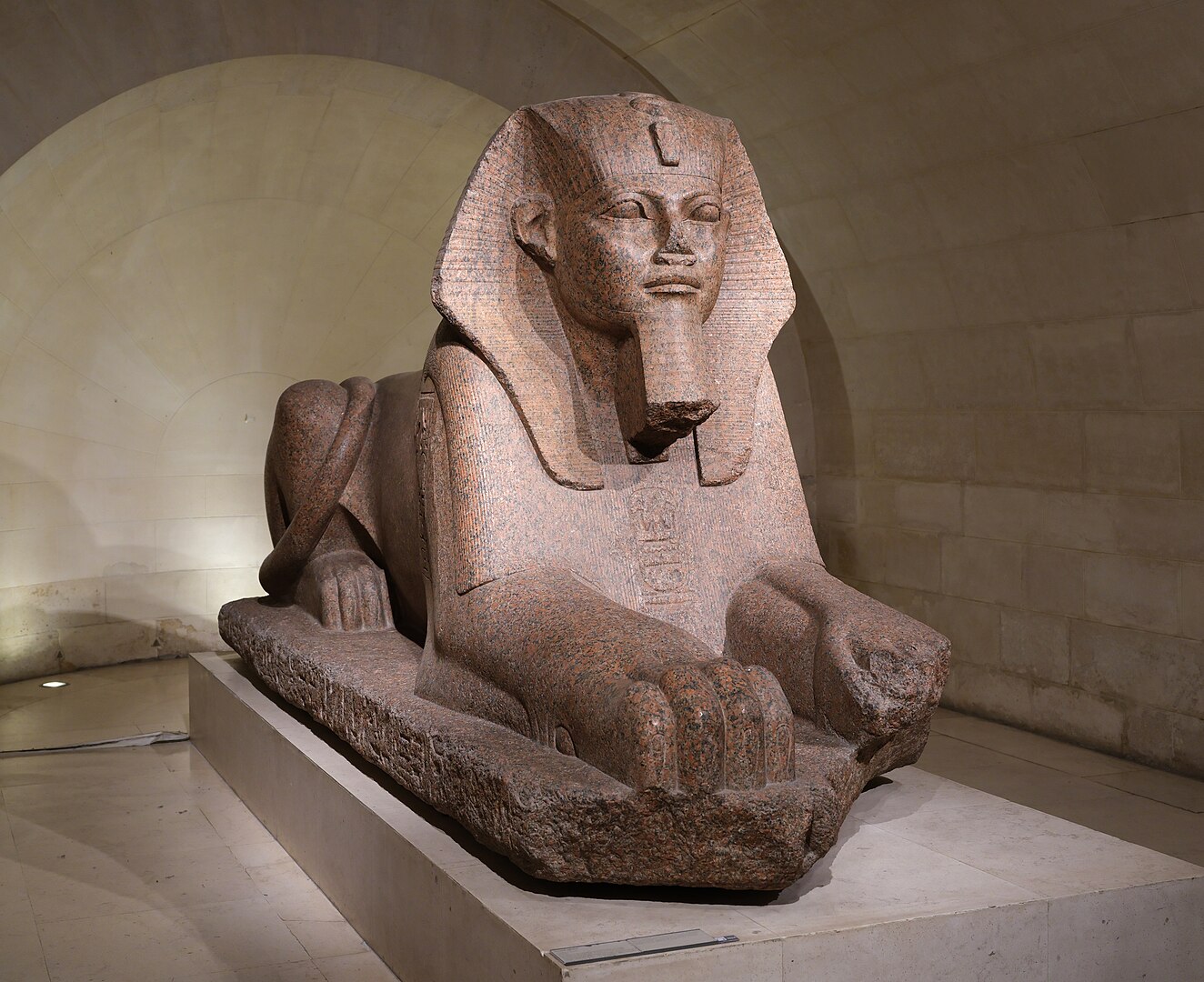
Is there a Sphinx in the Louvre?
The Great Sphinx of Tanis, a monumental granite sculpture housed in the Louvre Museum in Paris, stands as an evident to the grandeur and mystery of ancient Egyptian civilization. This impressive artifact, dating back to as early as the 26th century BCE, has captivated scholars and visitors alike with its enigmatic origins, historical significance, and the journey it undertook to become a centerpiece of one of the world’s most renowned museums.
Discovery and Journey to the Louvre
The Sphinx was unearthed in 1825 among the ruins of the Temple of Amun at Tanis, the capital of Egypt during the 21st and 22nd dynasties.
Its discovery was part of the broader wave of Egyptomania that swept through Europe following Napoleon’s Egyptian campaign, which had sparked immense interest in ancient Egyptian artifacts and culture.
In 1826, the Louvre acquired the Sphinx as part of the second Egyptian collection of Henry Salt, facilitated by Jean-François Champollion, the renowned decipherer of hieroglyphs.
Initially, there were plans to place the Sphinx outdoors at the center of the Cour Carrée, but these were not implemented. Instead, it was exhibited in the museum’s courtyard, known as the Cour du Sphinx, from 1828 until 1848. Later, it was relocated to the Galerie Henri IV, the main monumental sculpture room of the museum’s Egyptian Department. In the mid-1930s, the Sphinx was transferred to its present location in the crypt created by Louvre architect Albert Ferran, connecting the two halves of the southern wing of the Cour Carrée.
Physical Description and Artistic Significance
The Great Sphinx of Tanis is carved from rose granite, measuring approximately 183 cm in height, 154 cm in width, and 480 cm in length.
Its massive form combines the body of a lion with the head of a human, a symbolic representation in Egyptian art signifying the fusion of human intelligence and animal strength. The Sphinx’s serene expression and the intricate detailing of its headdress reflect the artistic mastery of ancient Egyptian sculptors.
The inscriptions on the statue mention several pharaohs, including Amenemhat II (12th Dynasty), Merneptah (19th Dynasty), and Shoshenq I (22nd Dynasty), suggesting that the sculpture was reused and re-inscribed over the centuries, a common practice in ancient Egypt.
This palimpsest of inscriptions adds layers of historical intrigue, indicating the Sphinx’s enduring significance across different eras of Egyptian history.
Historical Context and Symbolism
Sphinxes in ancient Egypt were emblematic of royal power and protection, often placed as guardians at the entrances of temples and tombs. The Great Sphinx of Tanis, with its lion’s body and human head, embodies this protective symbolism, serving as a sentinel of sacred spaces. The lion was associated with the sun god, embodying strength and ferocity, while the human head, often bearing the likeness of the reigning pharaoh, represented wisdom and divine authority.
The practice of reusing and re-inscribing statues like the Sphinx of Tanis reflects the Egyptians’ reverence for their past and their desire to link themselves to the legacy of their predecessors. By inscribing their names on existing monuments, pharaohs could assert continuity and legitimacy, reinforcing their divine right to rule.
The Sphinx in the Louvre: A Cultural Bridge
The presence of the Great Sphinx of Tanis in the Louvre serves as a cultural bridge between ancient Egypt and the modern world. As one of the largest sphinxes outside of Egypt, it offers visitors a tangible connection to a civilization that has long fascinated humanity. Its display in the Louvre’s extensive collection of Egyptian antiquities allows for a deeper appreciation of the artistic and cultural achievements of ancient Egypt.
The Louvre’s Egyptian Department, comprising over 50,000 pieces, provides a comprehensive overview of Egyptian life spanning from the ancient period to the Byzantine era. The Great Sphinx of Tanis stands prominently among these artifacts, inviting contemplation of the mysteries of the past and the enduring legacy of Egyptian civilization.
The Great Sphinx of Tanis is a symbol of the enduring allure of ancient Egypt. Its journey from the sands of Tanis to the halls of the Louvre encapsulates the historical fascination with Egyptian culture and the efforts to preserve and understand it. As visitors stand before this majestic sculpture, they are invited to ponder the mysteries of a civilization that continues to inspire awe and scholarly inquiry.




